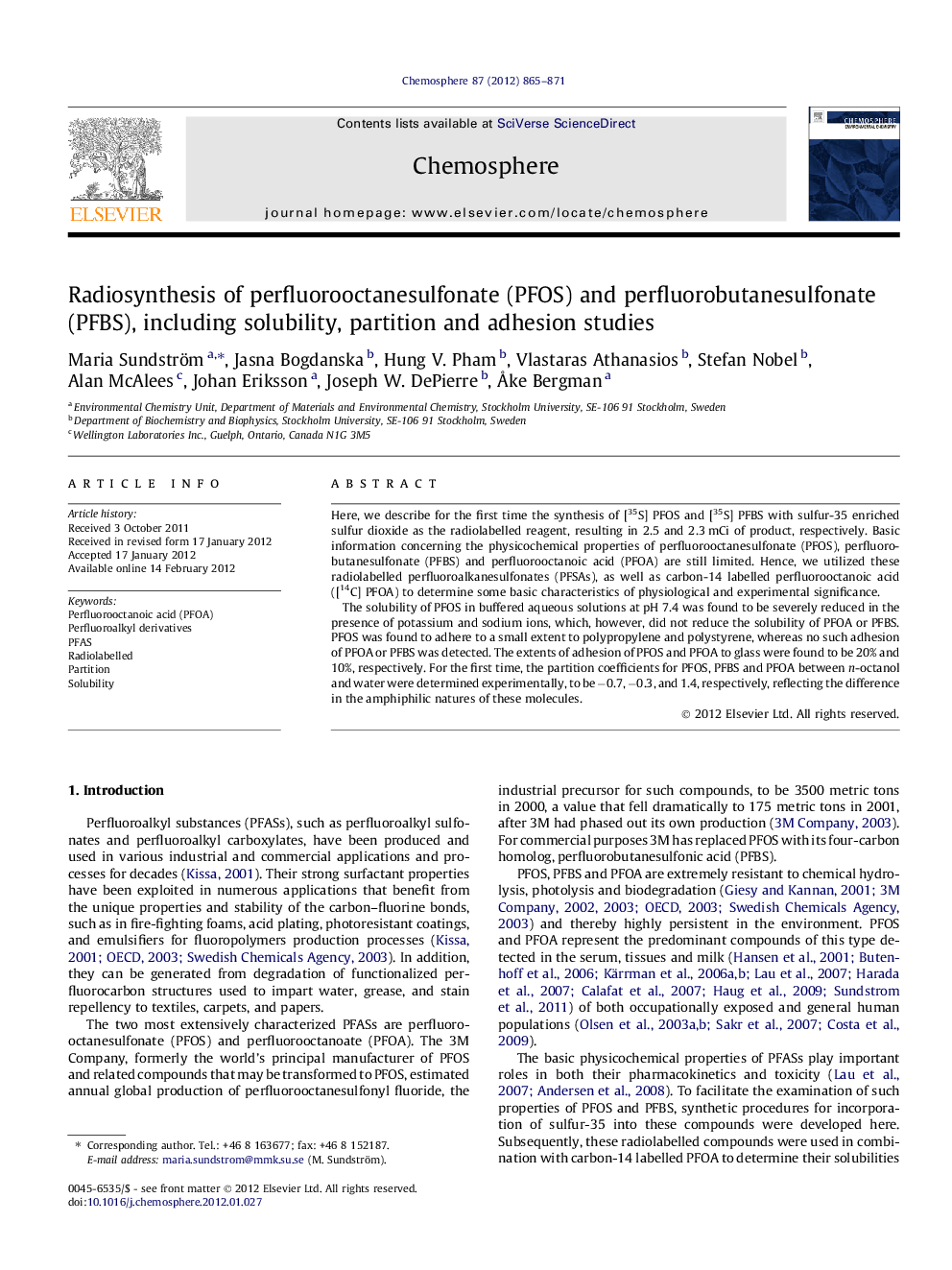| Article ID | Journal | Published Year | Pages | File Type |
|---|---|---|---|---|
| 4410372 | Chemosphere | 2012 | 7 Pages |
Here, we describe for the first time the synthesis of [35S] PFOS and [35S] PFBS with sulfur-35 enriched sulfur dioxide as the radiolabelled reagent, resulting in 2.5 and 2.3 mCi of product, respectively. Basic information concerning the physicochemical properties of perfluorooctanesulfonate (PFOS), perfluorobutanesulfonate (PFBS) and perfluorooctanoic acid (PFOA) are still limited. Hence, we utilized these radiolabelled perfluoroalkanesulfonates (PFSAs), as well as carbon-14 labelled perfluorooctanoic acid ([14C] PFOA) to determine some basic characteristics of physiological and experimental significance.The solubility of PFOS in buffered aqueous solutions at pH 7.4 was found to be severely reduced in the presence of potassium and sodium ions, which, however, did not reduce the solubility of PFOA or PFBS. PFOS was found to adhere to a small extent to polypropylene and polystyrene, whereas no such adhesion of PFOA or PFBS was detected. The extents of adhesion of PFOS and PFOA to glass were found to be 20% and 10%, respectively. For the first time, the partition coefficients for PFOS, PFBS and PFOA between n-octanol and water were determined experimentally, to be −0.7, −0.3, and 1.4, respectively, reflecting the difference in the amphiphilic natures of these molecules.
► Radiosynthesis of 35S-PFOS and 35S-PFBS. ► Determination of the solubility, hydrophobicity and adhesion of PFOS, PFBS and PFOA. ► The solubility of PFOS was highly reduced in the presence of sodium and potassium ions. ► PFOS and PFOA adhered to plastics and glass, but only to a small extent. ► The log Kow values for PFOA, PFBS, and PFOA were found to be −0.7, −0.3, and 1.4, respectively.
